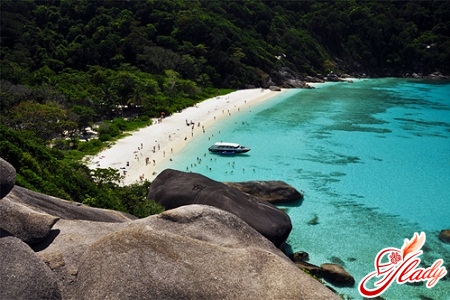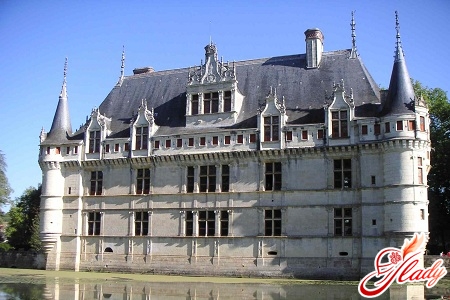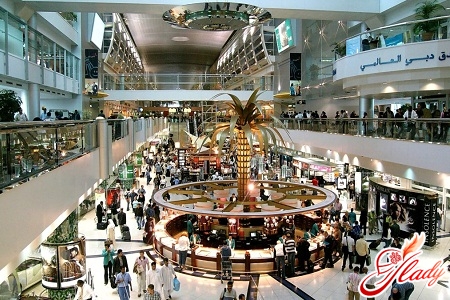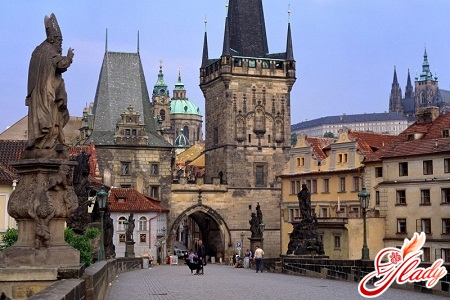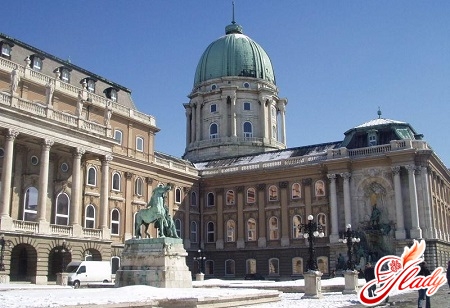
The State of Hungary is one of thethe most saturated with historical and cultural monuments of the states of Europe. Even in ancient times, when there was a great Roman Empire, the territory now belonging to this country bordered on Rome in its eastern part. In these places, the Romans settled, the Germanic tribes, the Slavs. According to legend, during the great migration of peoples, the legendary Attila, the leader of the Huns, found his last refuge here (on the banks of the Tisa River). Many modern historians and treasure hunters are still trying to find here jewelry that once belonged to this warrior. The Hungarian tribes came to this territory in 896. Architectural ensembles, which include temples and majestic palaces, testify to the turbulent and changeable history of the peoples who lived here. In addition to the monuments built by man, having arrived in Hungary, you will see a huge number of natural attractions. That's why Hungary is considered one of the best resorts in Europe.
Sights of the Hungarian capital
Like any other state, Hungary hasmany museums devoted to the culture and art of not only their country, but also many other figures. So, in Budapest there are an ethnographic museum, a museum of fine arts, and many other attractions. 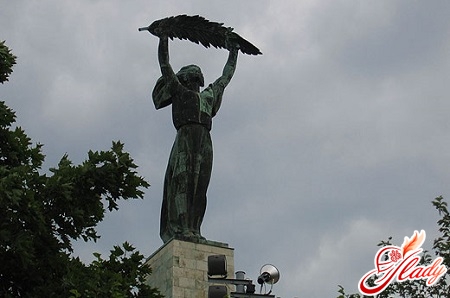
Museum of Fine Arts in Budapest
This museum is the most extensivestate collection of works of world art. It is interesting that the museum itself was founded in 1896, and opened its doors to visitors only 10 years later. But this is not the most interesting. Within the walls of the museum you will not find a single work that relates to the art and culture of the Hungarian people. Here there are collections of works of art of only foreign artists and sculptors. The museum building is located on Heroes Square, which in itself is also a landmark, and was built specifically for its use as a home for such valuable exhibits in the field of fine art. This can not boast of every museum, since a very large number of such institutions are located in buildings where balls were once organized, or even those that served someone as a place of residence. The building, built in neoclassical style by the project of two famous architects in Europe, Fulep Herzog and Albert Sikedanz, has been providing residents of the country and, of course, numerous tourists coming from abroad the opportunity to see the exposition of paintings, which is divided into six branches . The first branch is Ancient Egyptian, the basis of which were works of art from the personal collection of Eduard Mahler, the Hungarian Egyptologist. The basis of the department of ancient art was the collection of Paul Arndt from Munich. In the collection of exhibits of the ancient sculpture a special place is occupied by specimens from Austria and Germany, made of wood. No less interesting to visitors to the museum and a bronze statuette, which in the XVI century was done by European masters in drawings and sketches of Leonardo da Vinci himself. Exactly 15 drawings of Rembrandt, Leonardo's two sketches for "Battle of Anghiari" and as many as 200 works of Goya fill the department of graphics and engravings. Romantics and impressionists, at most, is represented by a gallery of new masters. These include such representatives of painting and fine arts as Delacroix, Rodin, Cezanne and Monet. A gallery of old masters will especially like lovers of traditionalism, a special place in it is occupied by works of the portrait genre. The central place in the exhibition is occupied by approximately 700 creative works of old masters, which were transferred to the museum from the collection of princes of Esterhazy. When the museum was preparing for the opening, a number of paintings from the manor houses of the Count's family Zichy and the Buda Castle were added to the number of these canvases. The permanent exhibitions of the museum are often replaced by temporary exhibitions. For example, sometimes the Museum of Fine Arts exhibits in its walls some artifacts brought from the Louvre Museum and other foreign museums, in order to acquaint local people with priceless and unique works of art. 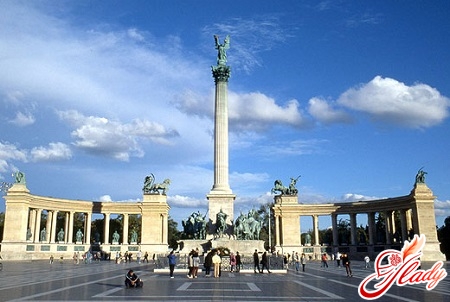
Ethnographical museum
The Ethnographic Museum, located in Budapest,Consider one of the largest of its kind museums in Europe. The collection collected in this museum includes about two hundred thousand various exhibits, which include a lot of artwork, photos, Hungarian clothes and accessories, jewelery worn and created by people during various time epochs. This museum aims not only to tell about the culture that the Hungarian people created, but also about many other European and non-European peoples. There are exhibited objects, thanks to which museum visitors can learn about the stages of the origin and development of cultures, from the primitive and ending with a civilized society. Expositions of the ethnographic museum in Budapest successfully cover several interesting subjects for different kinds of visitors. This is hunting, and beekeeping, and fishing, and livestock, and even objects of shepherd labor. It does not dispense with the presentation of objects of agriculture and craft, everyday life, and, of course, kitchen utensils. Expositions of folk clothes and fabrics, types of dwellings, special objects of customs and traditions, religion, entertainment and musical instruments have always been the most popular among residents and visitors of the city. And the age of visitors to museums can be very different - both old and young will find for themselves something interesting in this set of exhibits exhibited. The museum has permanent exhibitions that describe the traditional culture of the Hungarian people throughout its history and the national art of the country. Separately exhibit expositions devoted to the culture and way of life of the peoples of Asia, Africa and Indonesia. Since 1973, the Hungarian Ethnographic Museum was housed in the building of the former Palace of Justice, located opposite the building of the Hungarian Parliament, in the Lajos Kosuth Square. The Hungarian architect Alaiosh Hausman developed the project of a building in the style of grunting and sent to the competition projects the building of the parliament of Hungary, but lost to the project, which was presented to Imre Steindl. This, however, did not discourage Alaiosh Haussman, since his plan project in 1896 was used for the construction of the Palace of Justice.
Buda Castle
Going to Hungary, you need to visit the castle in the centerits capital, which is now called the castle of the Hungarian kings in Budapest, and a few years ago everyone called it the Royal Palace or the castle. Since 2002, the Buda Castle, along with some other sights of Budapest, has been included in the UNESCO World Heritage List. You can visit the fortress by getting on the Budaic funicular railway "Shiklo" or by bus, which runs from the square named after Selle Kalman, previously it was called Moscow Square. Buda Castle has seen a lot in its history. The oldest part of the castle, of course, poorly preserved until modern times, built in the XIV century. Duke of Slavonia Stefan, who was the younger brother of Louis the Great, who ruled Hungary. The King of Hungary Sigismund did a great deal to expand the castle, thereby bringing it to such proportions that became the largest in Europe during the late Middle Ages. 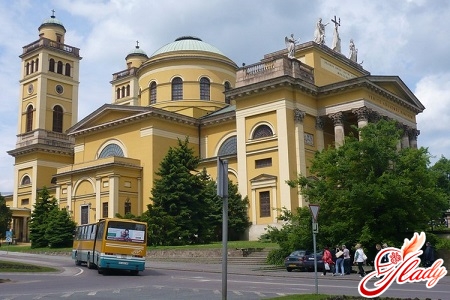
The ups and downs of the fortress
In 1526 Turks, crushing the kingdom of Hungary, absolutely unhindered to occupy the castle of kings and turned it into something terrible. Ottoman authorities brought many of the castle's premises to an appalling state - some of them were used as military barracks and even stables, some part of the building was empty, and the interior condition of the castle worsened before our eyes. The Great Turkish War brought the Hungarian not only the liberation from the power of the Turkish invaders, but also led to significant destruction of most of the buildings made on the castle's territory during the Middle Ages. More precisely, it happened during the liberation of the city by the troops of the allies of the Holy League of Buda. In 1715, according to the decision of King Charles VI, the territory of the Buda Castle was cleared from the ruins, after which he issued an order to begin construction of a new complex of palace buildings on the same site. It was completed in 1749. However, the palace lasted only for one century - in May 1849 during the revolution, the Hungarian army led by Arthur Gergey surrounded this castle and seized it. This all did not end - as a result of this seizure the new Royal Palace burnt to the ground. But the Hungarian government throughout the history of its existence very reverent attitude to the sights of his country, and especially those located in the capital. That is why almost immediately after the end of the war between Austria and Hungary in 1850-1856. the palace was quickly restored. The first of the rulers now Austria-Hungary, which was crowned in a virtually newly rebuilt castle, was the emperor Franz Joseph I. The nineteenth century meant for the Buda Castle a new stage of its existence and, of course, development. The autonomous Hungarian government decided to build a new building of the Royal Palace, which would not be inferior to any of the existing residences of monarchs of other European states at that time. This construction lasted almost four decades, from 1875 to 1912. The best palace in Europe Buda Castle did not. But immediately after the opening of the new Royal Palace, it was unanimously recognized in Hungary and in neighboring countries as the most outstanding building on the territory of the country. It became not only the next version of the residence of the Hungarian rulers, but also the personification of the state's entry into the new century. The Second World War did not pass through Hungary and, of course, could not but touch Budapest and Buda Castle itself. The capture of Budapest by the Soviet troops in 1944 ended in the same castle, as there remained in it a group of German invaders, who for a long time held the defense and did not surrender the city. Heavy fights, as a result of which the fascist troops were still defeated, influenced the state of the castle, which turned into ruins. After the war, it was decided to restore the former composition of the palace in Budapest. Archaeological excavations, whose purpose was to restore some of the medieval buildings, led to the discovery of structures built in the time of Sigismund. The grandiose reconstruction of the medieval fortifications, which the Hungarian masters did, markedly changed the whole face of modern Budapest. Successful implementation of the reconstruction project of the complex allowed to combine some medieval buildings with the layout of the castle in a modern style. This fortress is a landmark on which Hungary spent a lot of money.
The Szechenyi Chain Bridge across the Danube
One of the most beautiful places in Budapest, where lovecome the Hungarian inhabitants, is the Széchenyi Bridge, or, as it is also called, the Budapest Chain Bridge, which is a suspension bridge connecting the opposite banks of the Danube River. These two banks of one river are the historical parts of Budapest and are called Buda and Pest. Before the opening of this bridge in 1849, the capital of Hungary did not have a permanent bridge across the river. The extreme points of this chain bridge in Hungary are Roosevelt Square, which houses the Gresham Palace and the Hungarian Academy of Sciences in Pest, and Adam Clark Square, where the Zero Kilometer Stone and the lower station of the Budapest Cable Car are located, are in Buda. The bridge was named in honor of the famous for all Hungary policy, Count István Széchenyi, who invested enormous material resources and physical strength in the construction of this bridge. He, like no one else at that time, understood the need to create a permanent crossing over the river and created a real miracle of the world for the inhabitants of his country and the whole world. The bridge was a serious impetus in the development of the economic and social spheres of life in Hungary. Thanks to him Buda and Pesta finally united, thus creating one big city of Budapest - the capital of Hungary.





